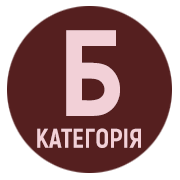TO THE QUESTION OF THE HISTORY OF DEVELOPMENT OF CONDUCTING ART
DOI:
https://doi.org/10.32782/2310-0583-2023-50-03Keywords:
collective leader, conductor, history of conducting artAbstract
The article reviews the history of conducting activity from the Antiquity to the 19th century. The author generalizes the features of each historical period in the context of religious and historical prerequisites (the emergence of dramatic and musical performances, the system of musical notation and the development of polyphony, new instruments and musical genres, the first concert scenarios, the combination of compositional and conducting functions of the work). The purpose of the research is to review the history of the development of conducting art from the Antiquity to the 19th century, to analyze the features and functions of the conductor according to each historical period in the context of religious and historical prerequisites. The methodology of this article is based on the application of historiographical, systemic, cultural and religious approaches to the analysis. Through the systemic review of scientific sources, the key aspects in which conducting art is the main component of managerial activity have been determined. The scientific novelty of the article consists in revealing the development of conducting performance, technical aspects, organization and maintenance of ensembles, creation of repertoire collections, use of scores, growing need for the quantitative composition of ensembles, as well as highlighting the role of the conductor as an important musical leader. The changes in the approaches to the management of musical performance have been considered and the gradual change in the names of the collective leader from poet-musician, auletes, didaskalos, coryphaeus, Dionysian artist, monk-singer, mentor, leader, regent, master-leader, domestikos, deacon, protopsalt, harmonizer, music teacher, charter member, bandmaster (bandmaster-harpsichordist, concertmaster-violinist, theater bandmaster), director, entrepreneur (impresario), to choir and orchestra conductor has been examined.
References
Іванов В. Навчання церковного співу в Україні у IХ–ХVII ст.: монографія. Київ : Музична Україна, 1997. 247 с.
Іванов В. Співацька освіта в Україні. X–XVIII ст. Київ : Вища школа, 1992. 71 с.
Іванов В. Співацька освіта в Україні у XVIII ст. Київ : «Музична України», 1997. 289 с.
Коменда О. Ренесансна творча особистість: риси універсалізму як феномен історичної доби. Тенденції та перспективи розвитку науки і освіти: зб. наук. пр. Вип. 19. Переяслав-Хмельницький, 2016. С. 198‒202.
Короткий вокально-хоровий термінологічний словник: для студентів денної та заочної форми навчання напряму підготовки 014 «Середня освіта (Музичне мистецтво)» та 025 «Музичне мистецтво» / укладач Е.К. Куцин. Мукачево : МДУ, 2017. 74 с.
Лошков Ю.І. Диригентське оркестрове виконавство в контексті української культури ХVІІІ–ХІХ ст. : автореф. … док. мистецтвознавства : 26.00.01. Харків, 2008. 23 с.
Ростовський О. Лекції з історії західноєвропейської музичної педагогіки : навчальний посібник. Ніжин : Видавництво НДПУ ім. М. Гоголя, 2003. 193 с.
Рудяченко О. Семен Гулак-Артемовський. Запорожець на чужині. Мультимедійна платформа іномовлення України «Укрінформ». 05.02.2022. URL: https://www.ukrinform.ua/rubric-culture/3395407-semen-gulakartemovskijzaporozec-na-cuzini.html (дата звернення: 10.11.2023 р.).
Сверлюк Я. Вітчизняне диригентсько-оркестрове мистецтво в контексті культурно-історичних подій. Методика викладання мистецьких дисциплін. 2013. Випуск 14. С. 311–314.
Anderson W. Music and Musicians in Ancient Greece. Ithaca and London: Cornell University Press. 1994. P. 110–170.
Michaelides S. The Music of Ancient Greece: An Encyclopaedia. London : Faber and Faber, 1978. P. 322.







